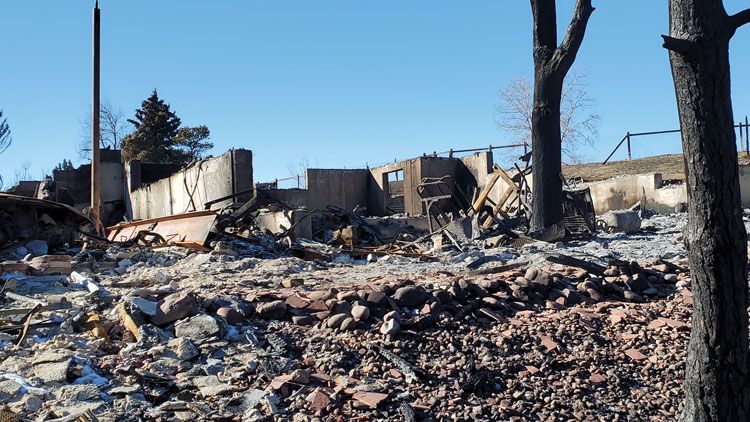CU study: Toxic soil levels mostly minor after Marshall Fire

BOULDER – Although concentrations of toxic metals in the aftermath of the devastating 2021 Marshall Fire were somewhat higher on burned properties than unburned ones, a study released Thursday by researchers at the University of Colorado Boulder found that those concentrations were lower than levels of concern for human health.
The results were published this month in Environmental Science & Technology.
“Given the extent and severity of the Marshall Fire, it is reassuring that soil contamination is not one of the problems residents or city officials need to worry about,” said Sierra Jech, a CU Boulder Ph.D student who was co-lead author of the study.
SPONSORED CONTENT
22nd Annual Vintage Affair: A Community Gathering to Support Pathways
The 22nd Annual A Vintage Affair event, presented by Wilbur’s Total Beverage, benefits Pathways’ mission of providing expert medical and comfort care for individuals navigating the last months of life.
The Marshall Fire, fueled by unusually high winds on Dec. 30, 2021, killed two people and destroyed an estimated 1,084 structures in Louisville, Superior and unincorporated Boulder County, including houses, a hotel and at least one shopping center. Colorado’s most destructive wildfire in terms of structures lost, it caused more than $2 billion in damage.
A team from CU Boulder’s Cooperative Institute for Research in Environmental Sciences that was led by Jech and fellow Ph.D student Cliff Adamchak, with support from CIRES fellows Eve-Lyn Hinckley and Noah Fierer as well as researchers from Colorado State University, worked together to answer two questions: Were soils on burned properties following the Marshall Fire more contaminated with toxic metals? If so, were these levels dangerous to human health?
Key findings from soil samples following analysis in the lab:
- Soils on burned properties had significantly higher concentrations of copper, zinc, lead and chromium, which are typically considered toxic, than soils in unburned properties.
- Metals were not elevated in the non-residential grasslands, highlighting the importance of anthropogenic material combustion (vehicles and homes) in post-fire soil contamination.
- When the researchers analyzed levels of metals to determine if they were dangerous to human health, they found concentrations well below the estimated thresholds of concern determined by the Environmental Protection Agency.
- The authors expected to find elevated levels of Polycyclic Aromatic Hydrocarbons, a group of often toxic chemicals as observed following wildland fires. PAHs were not elevated in soils following the urban Marshall Fire.
“Studies like this one are important to share broadly,” said Hinckley, “because it would be very easy for residents to be fearful or concerned about soil contamination when rebuilding on their properties, in the absence of data.”
Wildfires in the wildland urban interface are becoming more frequent, raising concerns for policymakers, scientists and residents. From 1990 through 2010, the number of homes in that transition zone increased from nearly 31 million to about 43 million. As homes pop up in wildfire-prone urban areas, researchers say the Marshall Fire might exemplify what’s to come. They say urban fires that burn homes and vehicles containing contaminants such as copper, zinc, lead, chromium and other toxic metals could enter soils and waterways, presenting new problems not seen in wildland fires.

